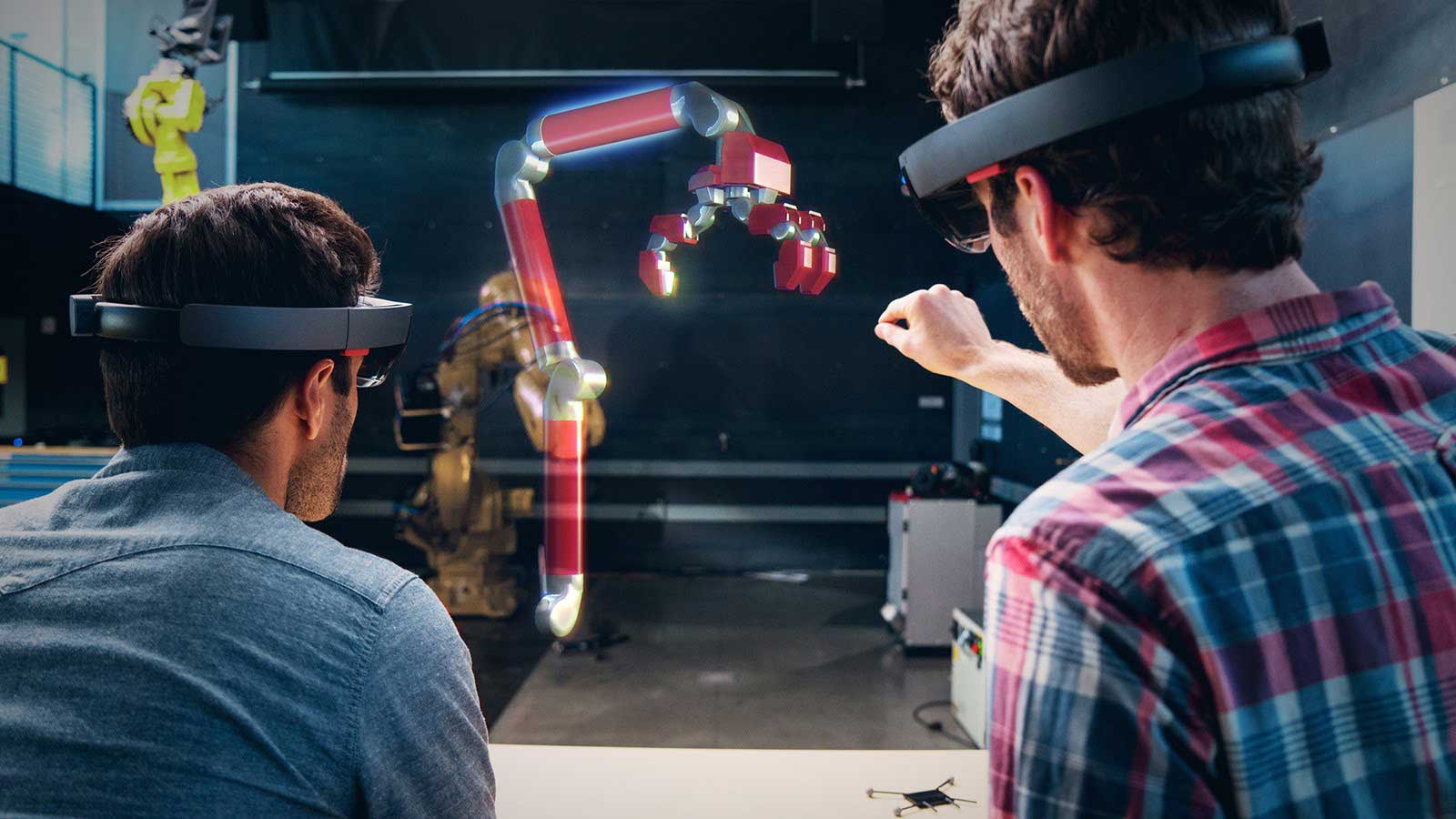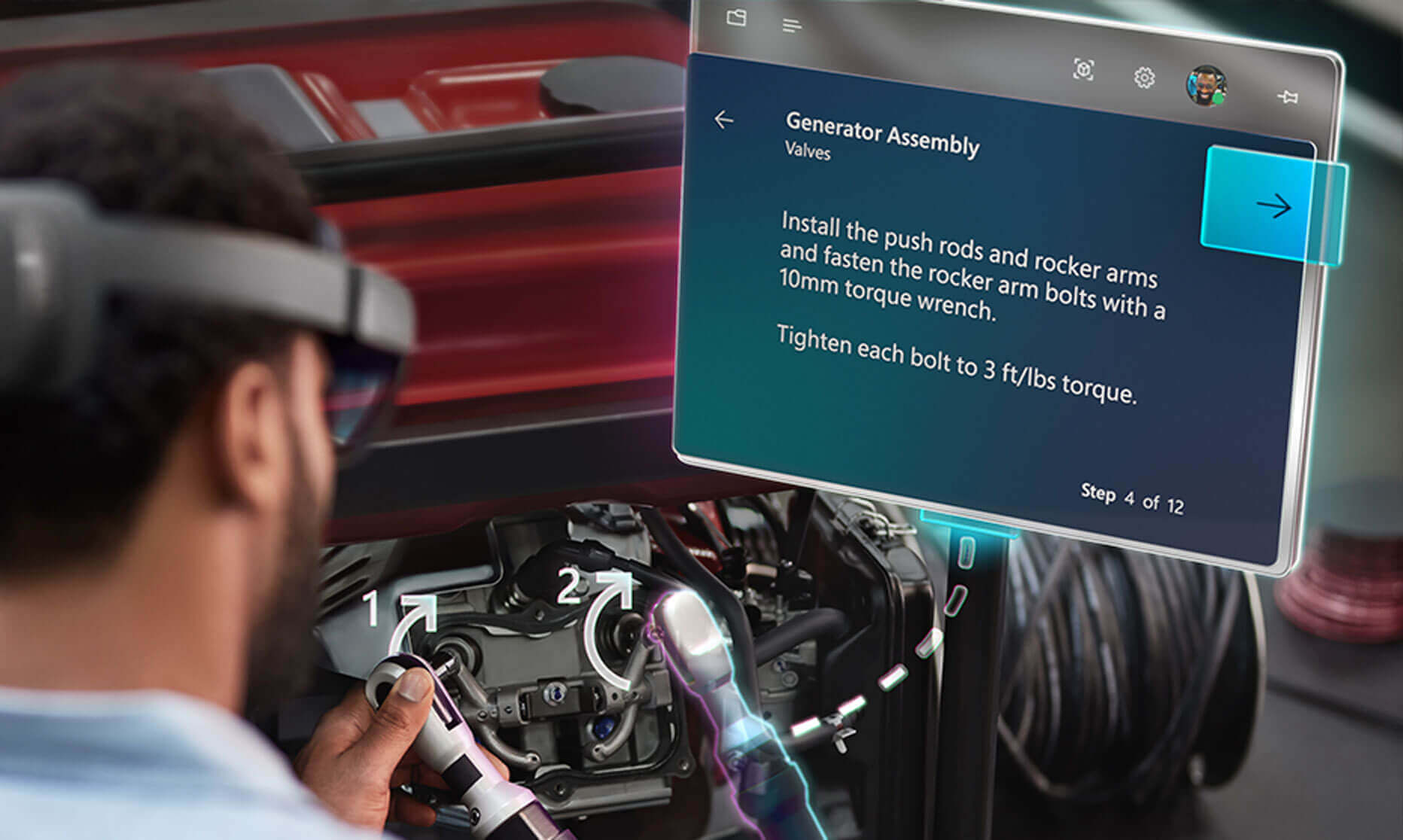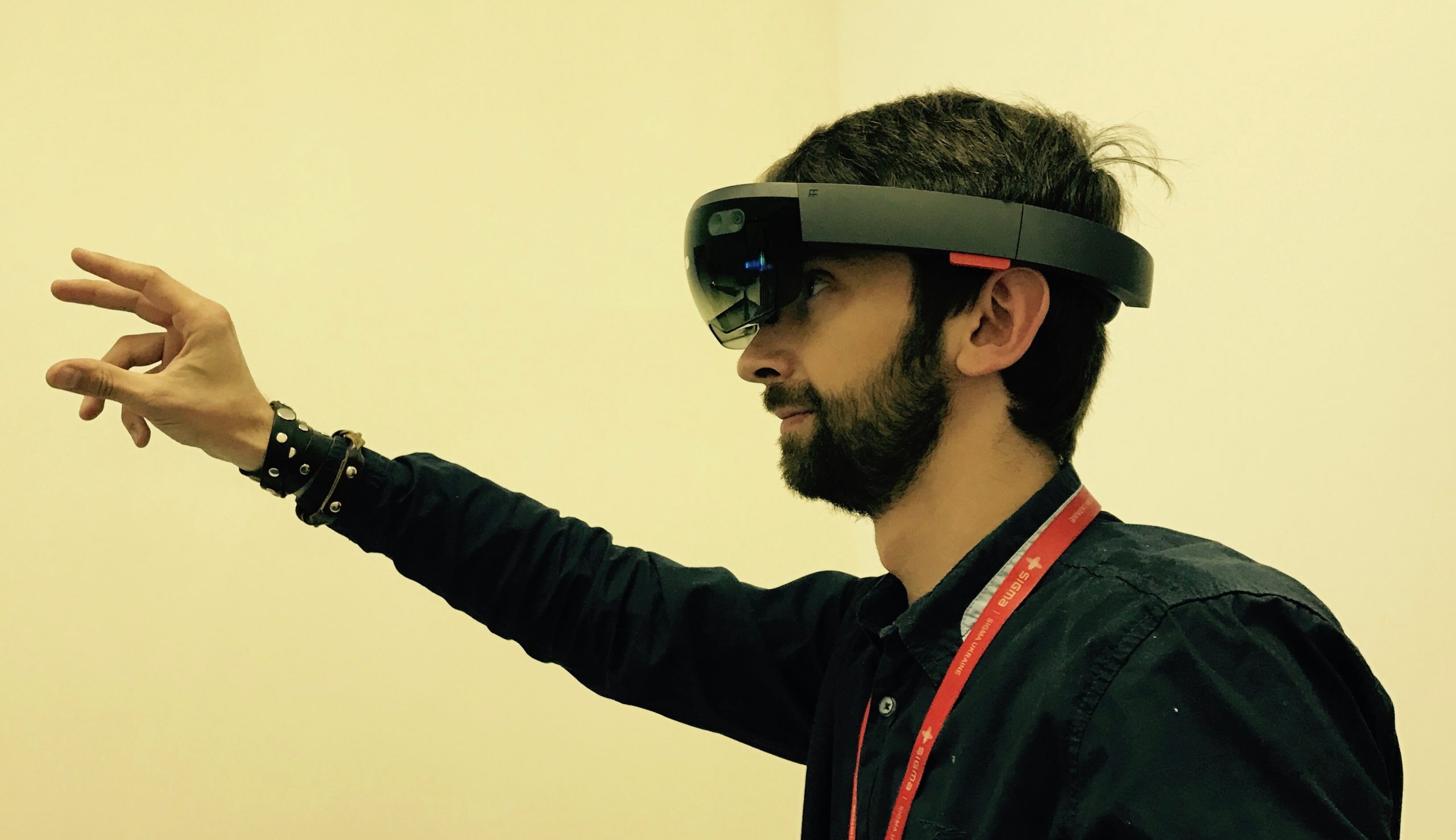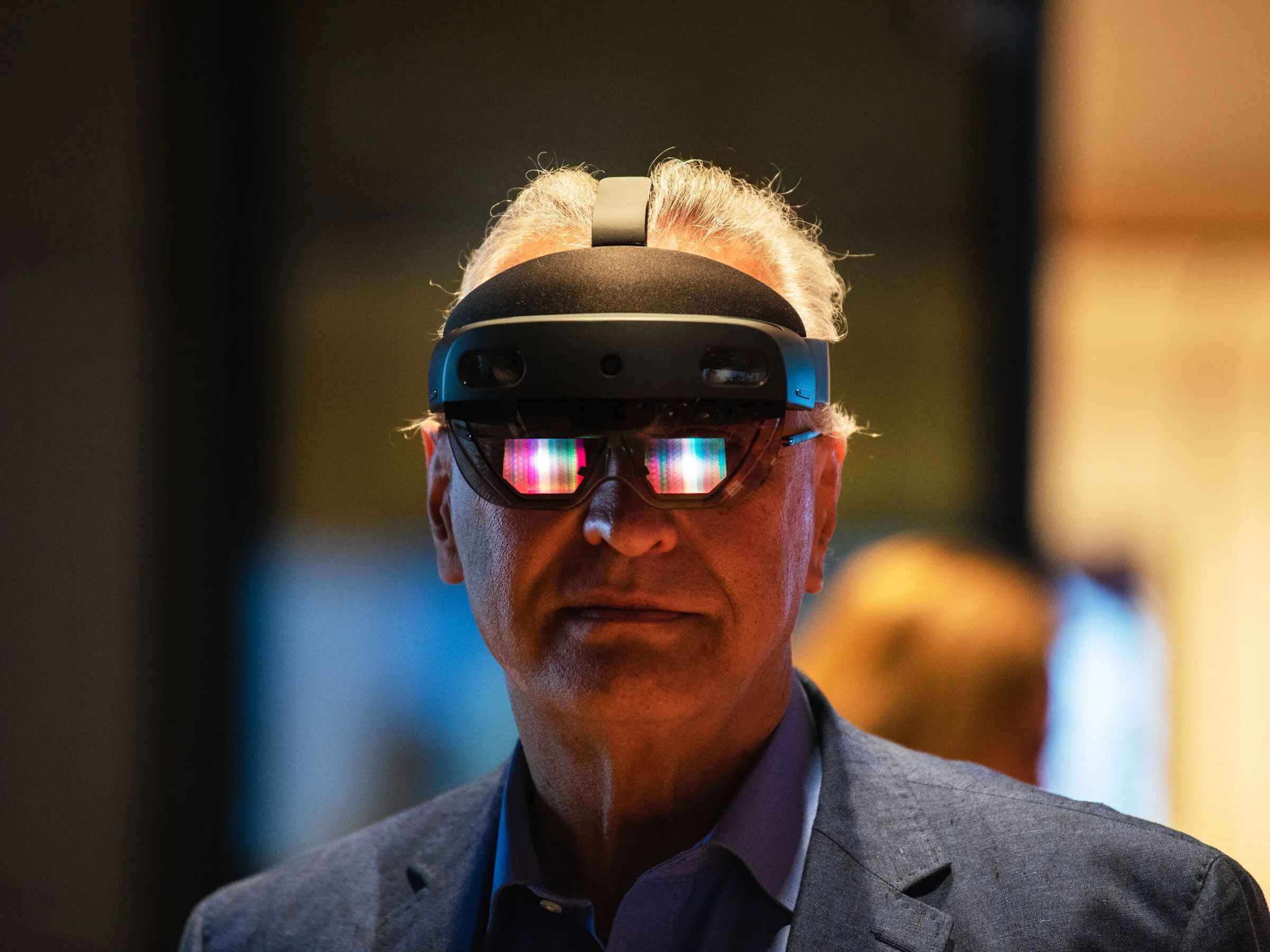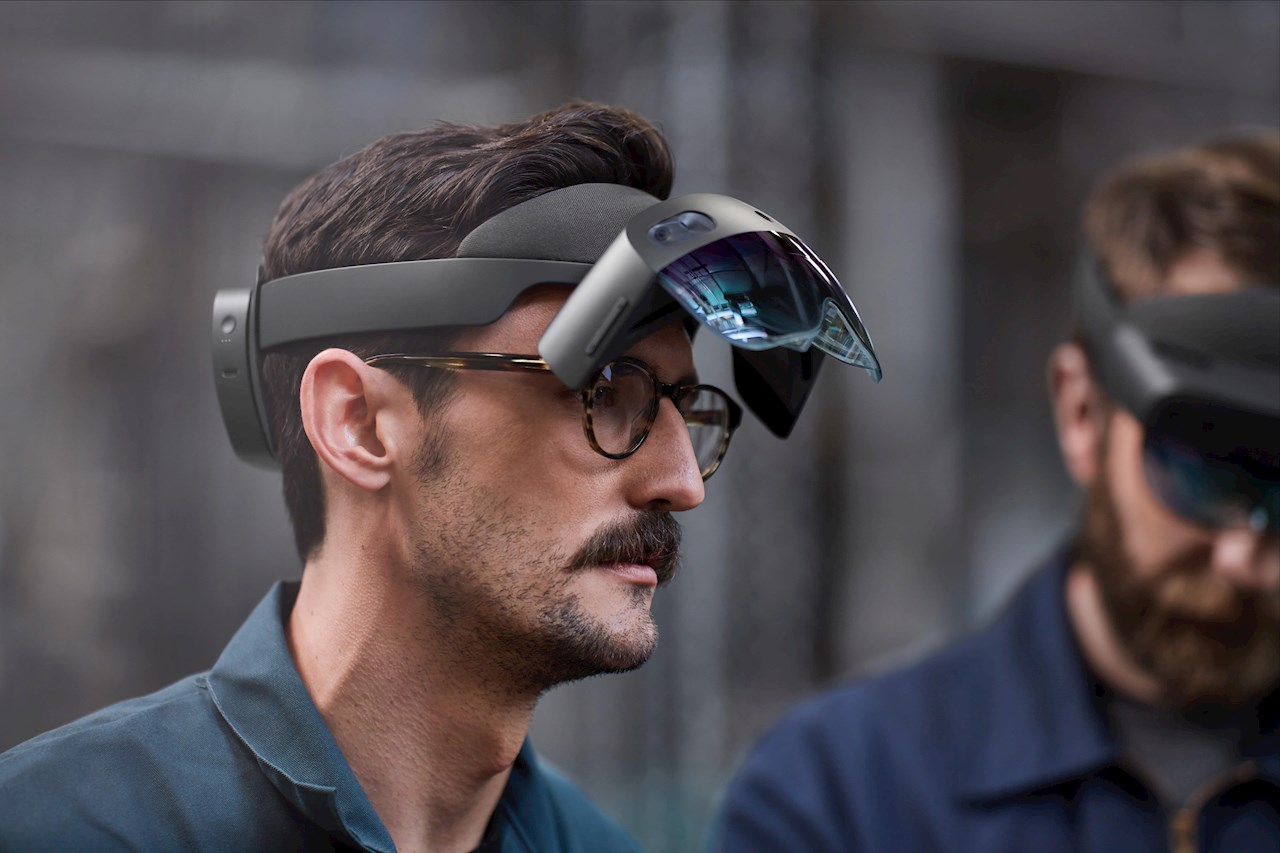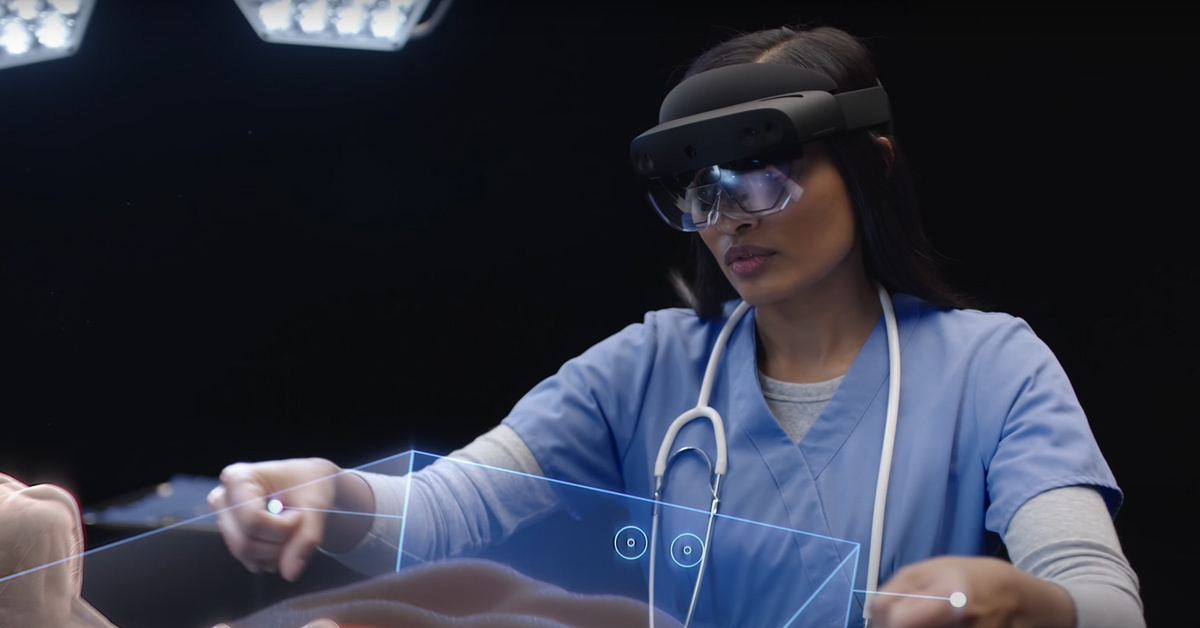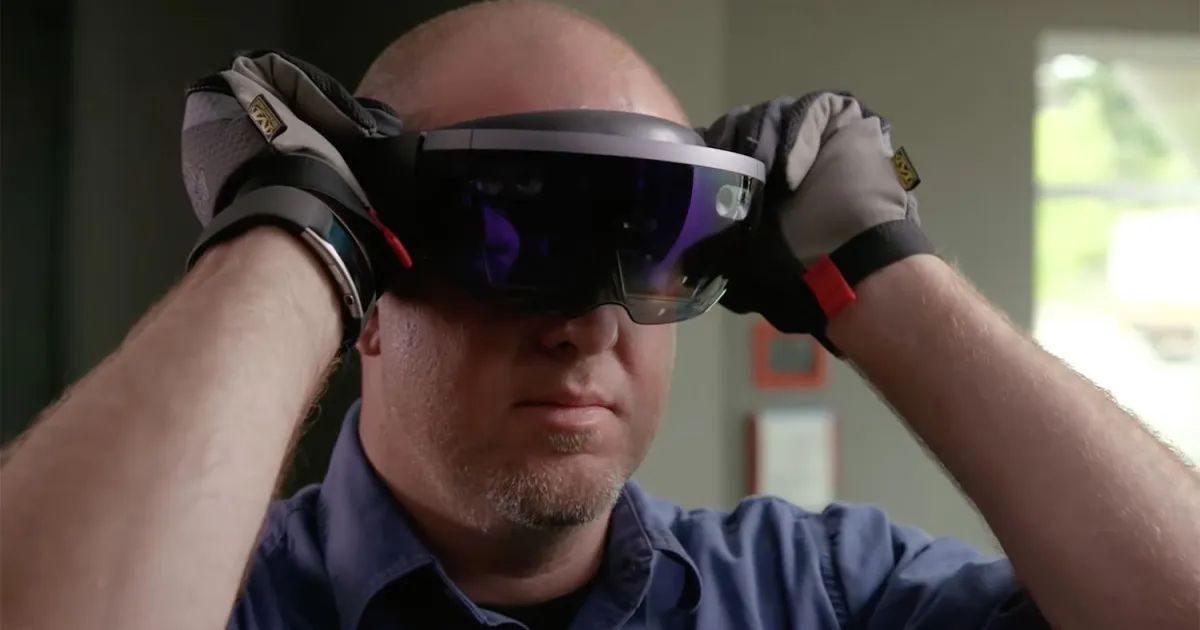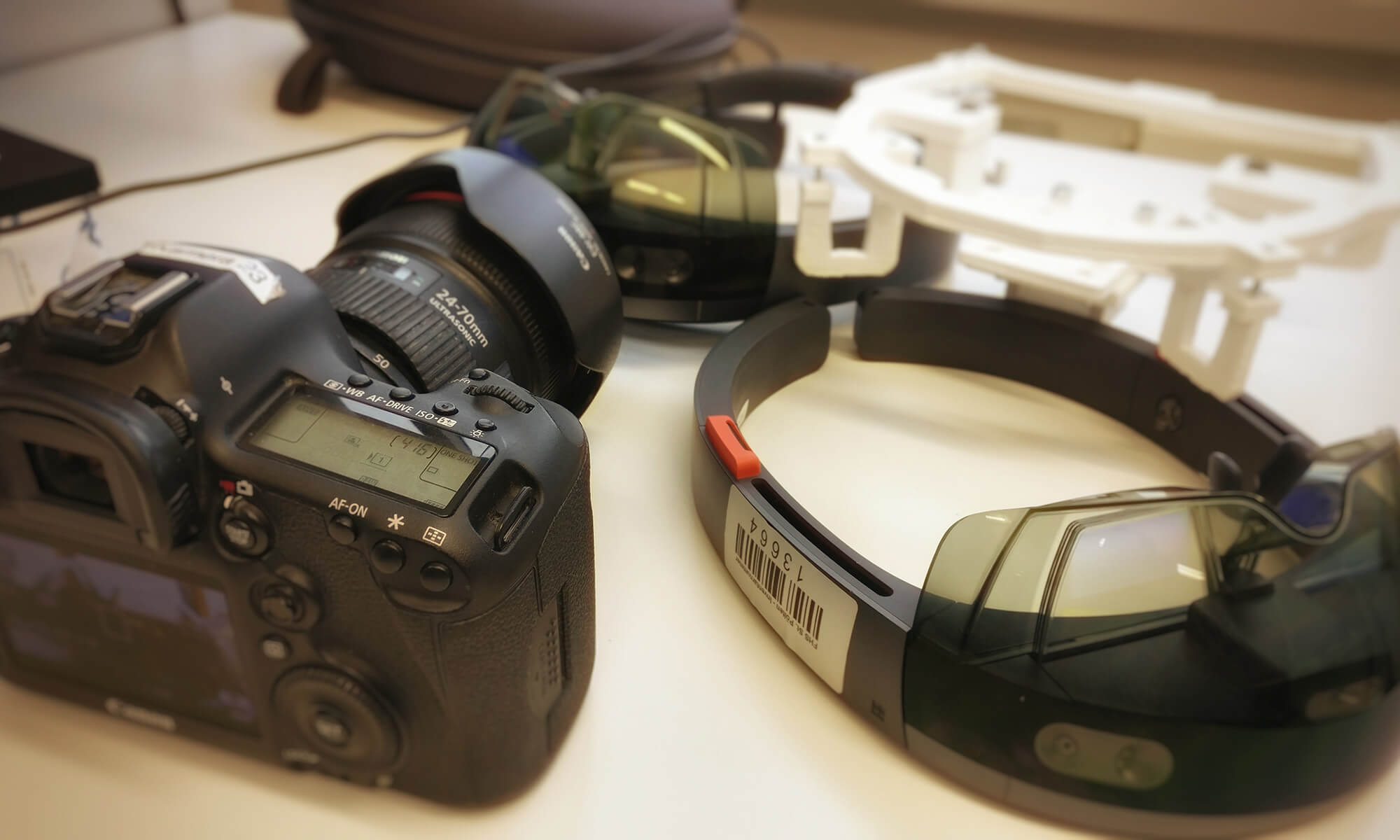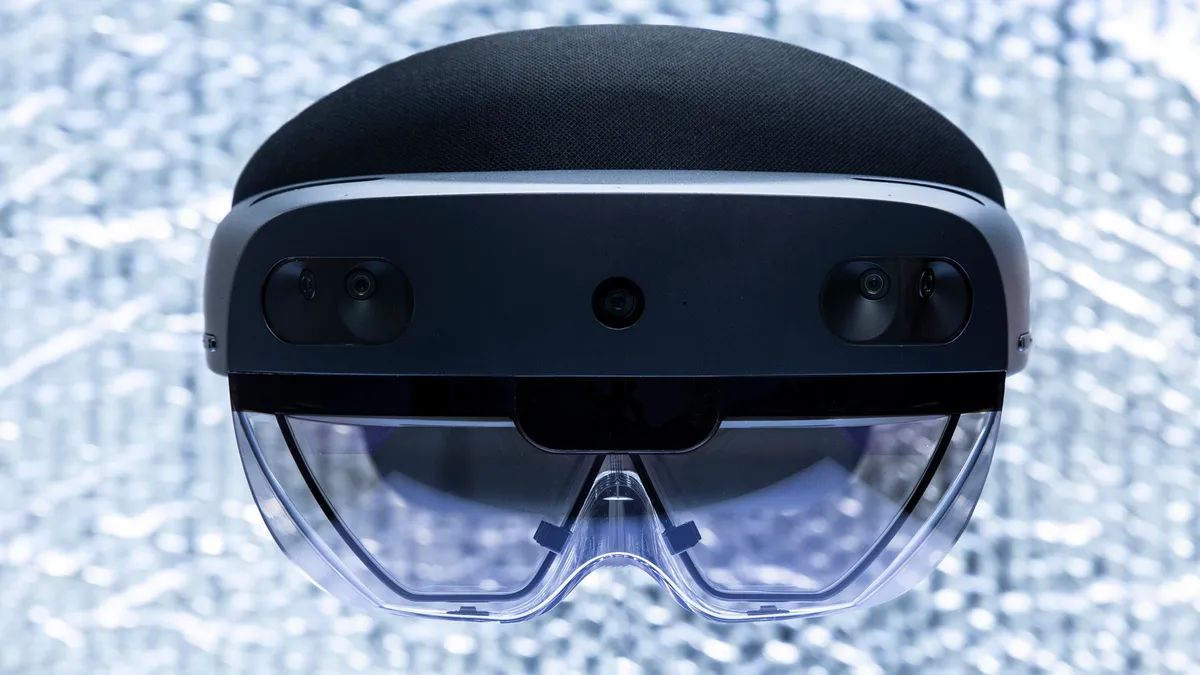Introduction
Welcome to the world of HoloLens app development! The HoloLens is a groundbreaking mixed reality device that blends the physical and digital worlds, allowing users to see and interact with holograms in their real environment. Whether you’re a developer looking to dive into the exciting realm of augmented reality or a business seeking to leverage the potential of HoloLens for innovative solutions, this article will provide you with a comprehensive guide on developing HoloLens apps.
Creating apps for HoloLens requires a unique set of skills and tools. While it may seem daunting at first, with the right guidance and resources, you’ll be well on your way to building immersive experiences that push the boundaries of what’s possible.
In this article, we will explore the fundamental aspects of HoloLens app development and provide step-by-step instructions to help you get started. We will cover topics such as setting up the HoloLens development environment, understanding spatial mapping, interacting with holograms, building user interfaces, incorporating voice commands and gestures, debugging and testing, and deploying/publishing your app.
Throughout this journey, you will gain a deep understanding of the HoloLens platform and learn how to leverage its unique features to create engaging and intuitive experiences. Whether you want to develop games, educational apps, virtual tours, or enterprise solutions, this article will equip you with the knowledge and skills to bring your ideas to life.
It’s important to note that HoloLens app development relies on the Universal Windows Platform (UWP) and familiar tools such as Visual Studio. This allows developers to leverage their existing skills in C# and the .NET framework to build immersive experiences for HoloLens. Additionally, HoloLens has built-in support for voice commands and gestures, which add another layer of interactivity to your apps.
So, if you’re ready to embark on an exciting journey into the world of HoloLens app development, buckle up and let’s explore the amazing possibilities of creating holographic experiences that can revolutionize how we interact with technology.
Understanding HoloLens
Before diving into HoloLens app development, it’s essential to have a solid understanding of what HoloLens is and how it functions. HoloLens is a self-contained wearable device developed by Microsoft that combines virtual reality (VR) and augmented reality (AR) to create a mixed reality (MR) experience.
One of the key features of HoloLens is its ability to map the user’s physical environment and overlay virtual holograms onto it. This is made possible by a set of sensors, cameras, and advanced tracking technology. The device is equipped with depth sensing, spatial sound, and a high-definition display, all of which work together to provide a seamless and immersive mixed reality experience.
Unlike virtual reality, which completely immerses the user in a computer-generated world, HoloLens allows users to see the real world while interacting with holograms. This opens up a wide range of possibilities for applications in gaming, education, design, remote collaboration, and more.
HoloLens provides a gesture-based interface that allows users to interact with holograms using hand gestures and voice commands. With hand gestures, users can pinch to zoom, tap to select, drag and drop holograms, and perform various other actions. Voice commands, on the other hand, enable users to control the device and initiate actions simply by speaking.
Another important aspect of HoloLens is its spatial mapping capabilities. Using a combination of cameras and sensors, HoloLens can create a detailed 3D map of the user’s surrounding environment. This allows users to place holograms in their real-world environment and have them interact with physical objects. Spatial mapping also enables features like occlusion, where holograms can be hidden behind real objects, creating a more realistic and immersive experience.
It’s worth noting that HoloLens operates on the Universal Windows Platform (UWP), which means developers can leverage their existing knowledge of C# and the .NET framework to build apps for HoloLens. Microsoft provides a robust set of APIs and developer tools, including the HoloLens Development Edition with access to Unity and Visual Studio, making it easier for developers to get started with HoloLens app development.
Now that we’ve gained an understanding of what HoloLens is and its capabilities, let’s proceed to the next section, where we will explore the process of setting up the HoloLens development environment.
Setting up the HoloLens Development Environment
Before you can start developing apps for HoloLens, you need to set up your development environment. Here are the steps to get you started:
- Install Visual Studio: HoloLens app development primarily relies on the Universal Windows Platform (UWP). To begin, you will need to install Visual Studio, the integrated development environment (IDE) for building UWP apps. Make sure to select the necessary components for UWP development during the installation process.
- Enable Developer Mode: On your HoloLens device, navigate to Settings > Update & Security > For developers. Enable the Developer mode option. This will allow you to install and test your apps directly on the device.
- Get Windows Holographic App Templates: In Visual Studio, open the Visual Studio Installer and ensure that you have the Windows Universal Platform development workload installed. Within this workload, select the Windows SDK version that matches your HoloLens device. It’s also recommended to install the Windows Template Studio extension, which provides project templates for building HoloLens apps.
- Configure Device Pairing: Connect your HoloLens device to your PC using a USB cable. On your HoloLens, navigate to Settings > Updates & Security > For developers > Device discovery and pair it with your PC. Follow the on-screen instructions to complete the pairing process.
- Create a New HoloLens App Project: In Visual Studio, go to File > New > Project. Select the template for a Windows Universal Platform app, and choose the HoloLens app template, such as Holographic DirectX or Holographic Unity. Customize the project settings, including the app name, target version, and minimum version.
- Build and Deploy the App: Once your project is set up, you can start building your app. Write your code, design the user interface, and incorporate the desired features and interactions. To deploy your app to the HoloLens device, select the appropriate target device in Visual Studio and click the “Start Debugging” button. The app will be deployed and launched on your HoloLens for testing and debugging.
Setting up the HoloLens development environment is crucial to ensure a smooth development process. By following these steps, you will have everything you need to start building and testing your HoloLens apps.
Now that we have our development environment ready, let’s move on to the next section, where we will explore the process of creating a new HoloLens app project.
Creating a New HoloLens App Project
Now that you have set up your HoloLens development environment, it’s time to create a new HoloLens app project. Follow these steps to get started:
- Launch Visual Studio: Open Visual Studio and ensure that you have the necessary project templates installed for HoloLens app development.
- Create a New Project: Go to File > New > Project. In the New Project window, select the template for a Windows Universal Platform (UWP) app.
- Choose the HoloLens App Template: In the project template selection window, choose the template that suits your needs for HoloLens app development. Visual Studio provides various templates, including Holographic DirectX and Holographic Unity. Select the one that aligns with your preferred development approach.
- Configure Project Settings: Customize the project settings according to your requirements. Specify the project name, location, and solution name. You can also choose the target version and minimum version of the Windows SDK that your app will support.
- Choose Language and Framework: Select the programming language and framework you want to use for your HoloLens app. You can choose between C# and C++ for Holographic DirectX projects, or use C# with Unity for Holographic Unity projects.
- Create Project: Once you have configured the project settings, click “OK” to create the new HoloLens app project. Visual Studio will generate the necessary files and project structure for you to start developing your app.
With the new project created, you can now begin building your HoloLens app. Depending on the chosen template, you will have different starting points and project structures. For example, if you selected the Holographic Unity template, you will be working with Unity assets, scenes, and scripts.
Take some time to explore the generated project structure and familiarize yourself with the files and folders that have been created. This will help you understand where to place your code and assets, making it easier to organize and manage your HoloLens app development workflow.
Remember to regularly save your changes and commit them to a version control system, such as Git, to maintain a record of your progress and easily collaborate with other team members, if applicable.
Now that you have your HoloLens app project set up and ready to go, it’s time to dive into the fascinating world of spatial mapping and understand how it can enhance the realism and interaction in your HoloLens apps.
Understanding Spatial Mapping
Spatial mapping is a fundamental aspect of HoloLens app development, enabling applications to interact with the user’s real-world environment and create a seamless blending of holograms and physical objects. It involves using sensors and cameras on the HoloLens device to generate a detailed 3D map of the surroundings.
When the HoloLens scans the environment, it collects depth, color, and texture data to create a spatial mesh. This mesh represents the physical surfaces and objects in the real world. Understanding spatial mapping allows developers to place holograms in the environment and have them interact realistically with the physical world.
One key benefit of spatial mapping is occlusion. With occlusion, holograms can be hidden behind real objects, bringing a higher level of realism to mixed reality experiences. For example, you can place a virtual creature on a table, and as you move around the table, the hologram will appear to be hidden or occluded by the table, just as a physical object would.
In addition to occlusion, spatial mapping enables users to anchor holograms in the environment. This means that holographic objects will stay in place relative to their surroundings, even if the user moves or turns their head. For example, you can place virtual furniture in a room, and it will retain its position as you walk around or look away.
Developers can access the spatial mapping data in their HoloLens apps to create compelling interactions. For instance, you can use the spatial mapping mesh to prevent holograms from intersecting with physical objects, triggering appropriate responses like collision detection or adjusting the position of the hologram to avoid obstructions.
Implementing spatial mapping in your HoloLens app requires familiarity with the Spatial Mapping API provided by the HoloLens SDK. This API provides methods to access the spatial mapping data and tools to visualize and interact with the generated mesh. You can programmatically query the mesh to perform operations such as raycasting, hit testing, or even slicing the mesh to create dynamic gameplay or simulation effects.
Understanding spatial mapping is crucial for creating believable mixed reality experiences. By leveraging the spatial mapping capabilities of HoloLens, you can build apps that seamlessly integrate holograms into the user’s real-world environment, providing a more immersive and interactive experience.
Now that we have a grasp of spatial mapping, we can move on to the next section, where we will explore how to interact with holograms in HoloLens apps.
Interacting with Holograms
Interacting with holograms is at the core of the HoloLens experience, allowing users to engage with virtual objects in their real-world environment. Understanding the various ways in which users can interact with holograms enables developers to create intuitive and engaging mixed reality applications.
HoloLens provides two primary methods of interaction: hand gestures and voice commands.
Hand Gestures: HoloLens recognizes a range of hand gestures that allow users to manipulate and interact with holograms. Some of the most commonly used hand gestures include:
- Air Tap: A simple tapping gesture performed by extending your index finger and then quickly closing it as if tapping on an invisible button. This gesture is used to select or interact with holograms.
- Pinch Gesture: Bringing your thumb and index finger together as if pinching or grabbing something. This gesture is often used for grabbing, rotating, or resizing holograms.
- Bloom Gesture: Opening your hand with your palm facing down and extending your fingers outward. This gesture is used to activate the Start menu or to navigate between apps.
- Scroll Gesture: Using a two-finger scroll gesture to move or scroll holographic content.
By leveraging hand gestures, developers can create natural and intuitive interactions with holographic objects, allowing users to manipulate and control the virtual elements in their environment.
Voice Commands: HoloLens also supports voice commands, enabling users to control the device and initiate actions by speaking. Users can interact with holograms using voice commands such as “Select,” “Next,” “Scroll Up,” or “Rotate.” Developers can integrate voice commands into their apps to enable hands-free navigation and control, making the user experience even more seamless and immersive.
In addition to hand gestures and voice commands, HoloLens also offers other input methods such as gaze tracking and spatial mapping. Gaze tracking allows developers to implement eye tracking functionalities, enabling users to interact with holograms simply by looking at them. Spatial mapping, as discussed earlier, enables interaction by recognizing physical surfaces and objects, allowing holograms to interact with the real world in believable and dynamic ways.
Understanding how users can interact with holograms is essential for designing and developing intuitive and user-friendly HoloLens apps. By leveraging hand gestures, voice commands, gaze tracking, and spatial mapping, developers can create immersive and engaging experiences that seamlessly blend the virtual and physical worlds.
Now that we have explored interacting with holograms, let’s move on to the next section, where we will delve into building user interfaces for HoloLens apps.
Building User Interfaces for HoloLens Apps
Building user interfaces for HoloLens apps requires careful consideration of the unique characteristics and capabilities of the device. HoloLens presents a mixed reality interface that seamlessly blends virtual holograms with the user’s real-world environment. Designing and implementing effective user interfaces is crucial to provide a seamless and intuitive user experience.
When designing user interfaces for HoloLens apps, it’s important to keep the following principles in mind:
- Placement and Anchoring: Holograms should be positioned and anchored in the user’s environment in a way that feels natural and contextually relevant. Users should be able to easily locate, interact with, and manipulate holograms.
- Clarity and Legibility: Text, icons, and visual elements should be clear and legible, even when overlaid on real-world objects or placed at different depths in the mixed reality environment. Consider factors like font size, contrast, and visibility in various lighting conditions.
- Minimalism and Simplicity: Avoid cluttering the user interface with unnecessary elements. Keep the design clean and minimalist, focusing on essential information and interactions. This helps prevent distraction and enhances the user’s ability to engage with the holographic content.
- Consistency and Familiarity: Strive for consistency in design patterns and user interactions throughout the app. Leverage familiar interaction models from the physical world or existing user interface conventions to make the experience more intuitive for users.
- Contextual Feedback: Provide visual and audio feedback to indicate the status or state of holograms and user actions. This helps users understand how their interactions are affecting the holographic environment and enhances the sense of presence and immersion.
- Adaptive Design: Consider the variability of the user’s surroundings and adapt the user interface accordingly. Account for different lighting conditions, room configurations, and physical objects in the environment to ensure the user interface remains usable and effective in different contexts.
Developers can leverage the HoloLens Toolkit or similar frameworks to assist in building user interfaces for HoloLens apps. These toolkits provide pre-built components, design guidelines, and best practices to ensure a consistent and efficient development process.
In addition to designing user interfaces, developers utilize frameworks like Unity or the Universal Windows Platform (UWP) to implement the UI elements and behaviors in HoloLens apps. These frameworks offer a wide range of tools and libraries to create 3D models, animate holograms, and program interactions with the user interface.
By understanding the principles of user interface design for HoloLens apps and employing the right tools and frameworks, developers can create intuitive and immersive experiences that seamlessly integrate holograms into the user’s real-world environment.
Now that we have explored building user interfaces for HoloLens apps, let’s move on to the next section, where we will discover how to incorporate voice commands to enhance user interaction.
Working with Voice Commands
Voice commands are a powerful and intuitive way for users to interact with HoloLens apps. By incorporating voice commands into your app, you can provide hands-free control and enhance the overall user experience. HoloLens offers built-in support for voice recognition, making it easy to integrate this functionality into your applications.
When designing voice commands for your HoloLens app, consider the following guidelines:
- Natural Language: Design voice commands that align with how users naturally speak, making them easy to remember and use. Avoid complex or unnatural phrases and provide clear instructions to guide users.
- Command Variations: Account for variations in how users may phrase a command. Allow for a degree of flexibility and intelligently interpret different wordings or variations to maximize the recognition accuracy and user satisfaction.
- Contextual Awareness: Consider the context of the user’s task or environment when designing voice commands. Ensure that the commands are relevant and appropriate for the current situation and provide appropriate feedback to guide users in their interactions.
- Confirmation and Error Handling: Implement a feedback system that acknowledges successful command recognition and provides appropriate feedback in case of errors or ambiguous commands. This helps users understand the system’s response and take corrective actions if needed.
- Command Discovery: Provide hints or prompts within the user interface to help users discover available voice commands. Consider using visual cues, tooltip overlays, or tutorials to educate users about the available voice interactions.
- Multimodal Interactions: Combine voice commands with other input methods, such as hand gestures or gaze tracking, to create a multimodal interaction experience. This allows users to choose the most convenient and comfortable way to interact with the holographic content.
To incorporate voice commands into your HoloLens app, you can leverage the Speech Input API provided by the HoloLens SDK. This API allows you to define and handle voice commands in your app. You can specify the phrases or keywords to listen for and define corresponding actions or behaviors when those commands are recognized.
When a voice command is recognized, your app can respond by performing specific actions, manipulating holograms, triggering animations, or navigating within the app. You can also integrate voice commands to control third-party services or interact with web APIs, creating a seamless and powerful user experience.
By working with voice commands in your HoloLens app, you can offer users a hands-free and natural way to interact with holograms, enhancing immersion and ease of use.
Now that we have explored working with voice commands, let’s move on to the next section, where we will delve into adding gestures and hand tracking to further enhance user interactions.
Adding Gestures and Hand Tracking
Adding gestures and hand tracking capabilities to your HoloLens app can greatly enhance the user experience by providing more natural and intuitive ways to interact with holograms. HoloLens offers built-in hand tracking and recognizes a variety of hand gestures, allowing users to manipulate, select, and navigate holographic content.
Here are some key gestures supported by HoloLens:
- Air Tap: A simple tapping gesture performed by extending your index finger and then quickly closing it as if tapping on an invisible button. This gesture is used to select or interact with holograms.
- Pinch Gesture: Bringing your thumb and index finger together as if pinching or grabbing something. This gesture is often used for grabbing, rotating, or resizing holograms.
- Bloom Gesture: Opening your hand with your palm facing down and extending your fingers outward. This gesture is used to activate the Start menu or to navigate between apps.
- Scroll Gesture: Using a two-finger scroll gesture to move or scroll holographic content.
Incorporating hand tracking and gestures into your HoloLens app involves utilizing the Hand Tracking API provided by the HoloLens SDK. By leveraging this API, you can track the user’s hand movements and recognize specific gestures as defined in your application.
When designing your app with gestures in mind, keep these considerations in mind:
- Gesture Feedback: Provide visual or auditory feedback to indicate when a gesture has been recognized. This helps users understand that their actions are being detected and assists in building confidence in the user’s interactions.
- Gesture Mapping: Map specific gestures to appropriate actions or behaviors within the app. Intuitively associate gestures with user interface elements or desired interactions. This allows users to naturally and seamlessly interact with holograms without having to rely solely on voice commands or other input methods.
- Gesture Accuracy and Robustness: Test and fine-tune gesture recognition to ensure accurate and reliable detection, minimizing false positives or missed gestures. Account for variations in hand size, shape, and movement speed to create a more inclusive and accessible experience for a wide range of users.
- Gesture Combinations: Consider combining gestures to perform more complex actions or enable advanced interactions. For example, a pinch gesture combined with a swipe gesture could trigger a contextual menu or activate a tool within the app.
Integrating gestures and hand tracking in your HoloLens app provides users with a more immersive and natural way to interact with holographic content. By leveraging these capabilities, you can create engaging and intuitive experiences that enhance the overall user experience.
Now that we have explored adding gestures and hand tracking, let’s move on to the next section, where we will discuss the important task of debugging and testing HoloLens apps.
Debugging and Testing HoloLens Apps
Debugging and testing are essential steps in the development process of HoloLens apps to ensure that they perform as expected and provide a seamless user experience. Proper testing and debugging can help identify and resolve issues, optimize performance, and ensure that the app functions correctly on the HoloLens device.
Here are some key considerations for debugging and testing HoloLens apps:
- Emulator vs. Device: The HoloLens Emulator allows you to test your app without the physical device. However, to accurately assess and debug the app’s performance on the HoloLens, it’s recommended to test directly on the device itself. This ensures that you can evaluate real-world factors such as spatial mapping, hand gestures, and environmental conditions.
- Debugging Tools: Visual Studio provides a range of debugging tools that assist in identifying and fixing issues in HoloLens apps. These include breakpoints, code stepping, watch windows, and the output console. Utilize these tools to identify and track down any bugs or abnormalities in your application.
- Capturing Holographic Video: To analyze and review the behavior of holograms within your app, you can use the built-in HoloLens video capture feature. With this tool, you can record holographic video and review it later to spot any issues or unexpected behavior.
- User Testing: Conduct thorough user testing sessions with individuals who may use your app. This helps in gathering feedback, identifying usability issues, and ensuring that the app meets the needs and expectations of its intended users.
- Performance Optimization: Test the performance of your app on the HoloLens device and look for areas where optimization may be required. Consider factors such as frame rate, rendering performance, and battery usage. Analyze profiling data, use performance counters, and leverage the HoloLens Performance Toolkit to identify and address any performance bottlenecks.
- Iterative Testing: Testing should be an iterative process throughout the development cycle. Continuously test and iterate on your app to address bugs, improve functionality, and enhance the overall user experience. Regularly deploy updated versions of your app to the HoloLens device for testing and evaluation.
Debugging and testing are critical steps to ensure that your HoloLens app functions reliably and provides a seamless experience for users. By utilizing the available tools and conducting thorough testing sessions, you can identify and address any issues, optimize performance, and deliver a high-quality app.
Now that we have explored debugging and testing HoloLens apps, let’s move on to the next section, where we will discuss deploying and publishing your HoloLens app.
Deploying and Publishing Your HoloLens App
Once you have successfully developed and thoroughly tested your HoloLens app, it’s time to deploy and publish it. Deploying an app allows you to install and run it on the HoloLens device for further testing and validation. Publishing, on the other hand, makes your app available to the wider audience through platforms like the Microsoft Store or enterprise distribution channels.
Here are the key steps to deploy and publish your HoloLens app:
- Package the App: Before deploying or publishing, you need to create a package that includes all the necessary files and dependencies. In Visual Studio, go to the Solution Explorer, right-click on your project, and select “Store”>”Create App Packages”. Configure the package options, such as architecture and signing, and proceed to create the package.
- Sideload Deployment: To deploy the app directly to your HoloLens device for testing or distribution outside of the Microsoft Store, sideloading is the preferred method. Connect your HoloLens device to your PC through a USB cable and use the Windows Device Portal to deploy the app package to the device. Follow the on-screen instructions and monitor the deployment progress.
- Publish to Microsoft Store (Optional): If you plan to distribute your app to a wider audience, you can submit it to the Microsoft Store for review and publishing. Ensure that your app meets the store’s guidelines and requirements. Prepare the app for submission by creating the necessary submission assets, including descriptions, screenshots, and icons. Then, follow the submission process provided by the Microsoft Store to publish your app.
- Enterprise Distribution: If you are developing an app for internal use within an organization, you have the option to distribute it through enterprise channels. This typically involves packaging your app as an app installation file (MSIX or APPX), signing it, and providing it to the target users or deploying it through an internal distribution system.
Ensure that you thoroughly test your app on the HoloLens device before submitting it for publishing or distribution. Address any issues or bugs that may arise during the testing phase to ensure a smooth user experience for your app’s audience.
Consider providing release notes or documentation to accompany your app, informing users about its features, interactions, and any known issues or limitations. This helps set proper expectations and assists users in utilizing your app effectively.
With your HoloLens app deployed and published, continue to monitor user feedback, addressing any reported issues or concerns promptly. Consider gathering analytics data to gain insights into app usage, performance, and user behavior, enabling you to make informed decisions for future updates and improvements.
Now that you understand the process of deploying and publishing your HoloLens app, you are ready to share your creation with the world and have a positive impact on the mixed reality ecosystem.
Conclusion
Congratulations on completing this comprehensive guide to HoloLens app development! Throughout this article, we have explored the various aspects of HoloLens development, from setting up the development environment to deploying and publishing your app. We’ve covered topics such as understanding HoloLens, building user interfaces, incorporating voice commands and gestures, and debugging and testing your app.
With HoloLens, developers have the opportunity to create immersive mixed reality experiences that seamlessly blend the physical and virtual worlds. By leveraging spatial mapping, hand gestures, voice commands, and other interaction methods, you can provide users with a new and exciting way to engage with holograms and augment their real-world environment.
Remember, when developing HoloLens apps, it’s crucial to prioritize user experience, ensure intuitive interaction, and create engaging content. Consider the unique capabilities and constraints of the device, design with clarity and simplicity, and continually iterate and test your app to deliver a seamless and enjoyable user experience.
As you continue your journey in HoloLens app development, remember to stay up to date with the latest tools, technologies, and best practices. Engage with the vibrant HoloLens developer community, attend conferences, and explore resources provided by Microsoft and other industry experts.
Developing for HoloLens opens up a world of possibilities, whether you’re building educational apps, immersive games, or innovative enterprise solutions. Embrace the limitless potential and continue to push the boundaries of what’s possible with mixed reality.
Now it’s time to unleash your creativity and start building incredible HoloLens apps that will captivate and amaze users around the world. Happy coding!







